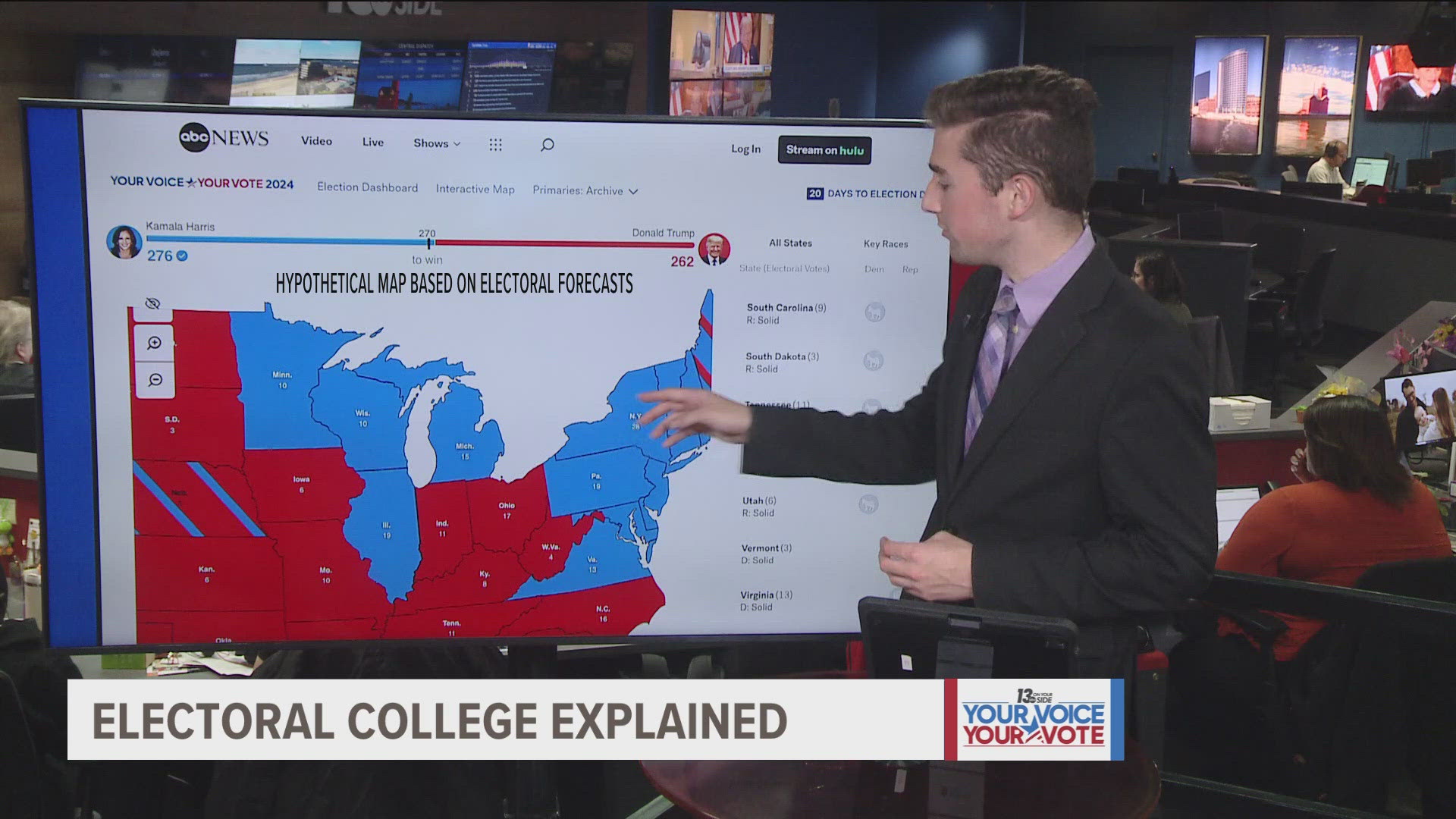MICHIGAN, USA — Election Day 2024 is here. Voters across the nation are casting their ballot for the president of their choosing — or are they?
In the American voting system, voters don't choose their president directly through the popular vote. When they cast their ballot, they are technically voting for a slate of electors who will then vote for president and vice president on a specific day in December.
That's when the Electoral College steps in.
What is the Electoral College?
The U.S. has a unique system for electing a president, the Electoral College. In modern times, it has put disproportionate voting power in the hands of a few states that are fairly evenly divided politically.
That forces campaigns to dedicate most of their money to the so-called battleground states. There are seven of them this year — Arizona, Georgia, Michigan, Nevada, North Carolina, Pennsylvania and Wisconsin.
Nearly all states have laws binding electors to vote for the winner of their state’s popular vote, but that doesn't mean the presidential candidate who gets the most Electoral College votes is the one favored by the majority of voters.
In two of the last six U.S. presidential elections, candidates have lost the nationwide popular vote but won the presidency. This includes former President Donald Trump, who lost the popular vote to Democrat Hillary Clinton in 2016 by nearly 2.9 million but still won enough votes in the Electoral College to become president.
This often sounds crazy to people who live in democracies in the rest of the world. The U.S. is the only country to have a system where voters select a body of electors with the sole function of choosing the president. In most other democracies, the president is directly elected through the popular will of the voters.
Each state's presidential electors are equal to the number of its representatives in the U.S. House and Senate. This benefits smaller states and sets the stage for presidential elections to largely hinge on just a handful of swing states.
A presidential candidate must win a majority of the 538 total electoral votes to win (the District of Columbia gets three), which is at least 270 votes. Most states use a winner-take-all system in which all electors award their votes to the popular winner in the state. Maine and Nebraska are the exceptions, awarding theirs on a proportional basis.
What happens if neither presidential candidate gets 270 electoral votes?
A candidate needs 270 electoral votes to win the presidency, but with 538 electoral votes up for grabs, a 269-269 tie is possible. If that happens, what comes next?
In the case of an Electoral College tie, the newly-elected members of the House of Representatives step in to determine the winner, according to the 12th amendment. The Senate decides the vice president.
For the House vote, it's not as simple as each representative voting for their preferred candidate. Each state's House delegation receives one combined vote. The candidate who receives a majority of state votes (26) becomes the president. Currently, Republicans have a majority in 26 state House delegations and Democrats have a majority in 21. Three states are evenly split: Minnesota, Michigan and Pennsylvania.
The vice president is decided by the Senate with a simple majority vote. Each senator gets one vote.
If the House vote ends in a tie, representatives are instructed to keep at it until one state flips. If there is no decision by Inauguration Day, the vice president-elect becomes acting president until the House breaks the tie.
Where can I get results?
As soon as results begin to trickle into our newsroom once the polls close at 8 p.m., 13onyourside.com/elections is your hub for results.
Here's a complete list of Michigan county election clerk's websites where you'll find unofficial results on election night.

